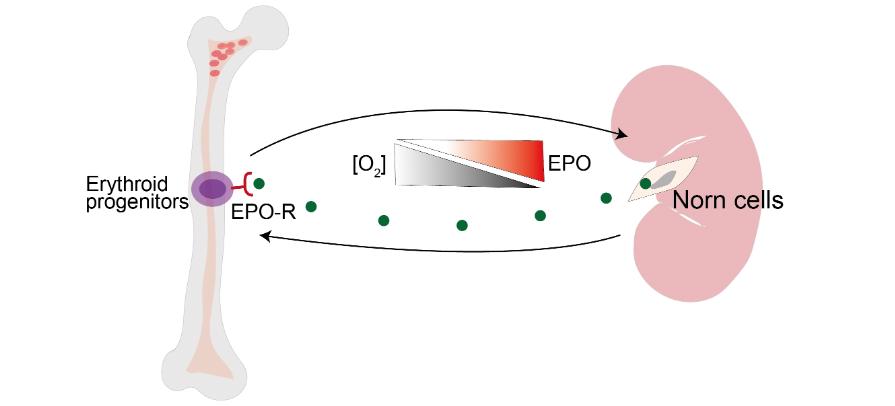Mystery of Red Blood Cell Production Solved
Faroese scientist at the Weizmann Institute of Science in Israel, Bjørt Katrinardottir Kragesteen, and other scientists from Israel, Europe and the United States have identified a rare subset of kidney cells that are the main producers of Epo in the human body. The researchers named them Norn cells, after the mythological Norse creatures believed to spin the threads of fate.
Bjørt Kragesteen is first author of a new paper, published today in Nature Medicine, on production of red blood cells. The title of the paper is “The transcriptional and regulatory identity of erythropoietin producing cells“.
To get life-giving oxygen into every cell, the human body produces two to three million oxygen-carrying red blood cells each second. This process is controlled by a hormone called erythropoietin, commonly known as Epo, which works by binding, in the bone marrow, to cells that are poised to become red blood cells, promoting their proliferation. Erythropoietin was discovered decades ago, but the identity of the cells that make this hormone remained unknown – until now.
Epo is probably most famous for its illegal use as a doping agent in sports. But the hormone is also used by millons of people with chronic kidney diseases which often cause impaired Epo production that can result in anemia and, in severe cases, be lethal. Until recently, the only way to treat people with this type of anemia was with Epo produced by recombinant DNA technology. The discovery of the Norn cells may lead to the development of new therapies for treating anemia resulting from kidney disease and other conditions.
The scientists who identified the Norn cells believe that in the future new approaches may be developed to re-activate malfunctioning Norns or to renew their population in the kidneys, similarly to newly developed therapies in which insulin-producing beta cells are being reintroduced into the pancreas of people with diabetes.
The article in Natural Medicine can be seen here:
The transcriptional and regulatory identity of erythropoietin producing cells
